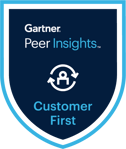 DNSFilter: AI-Powered Content & Threat Filtering
DNSFilter: AI-Powered Content & Threat Filtering
Block phishing, malware, and unwanted content in minutes, without hardware or complex setup.
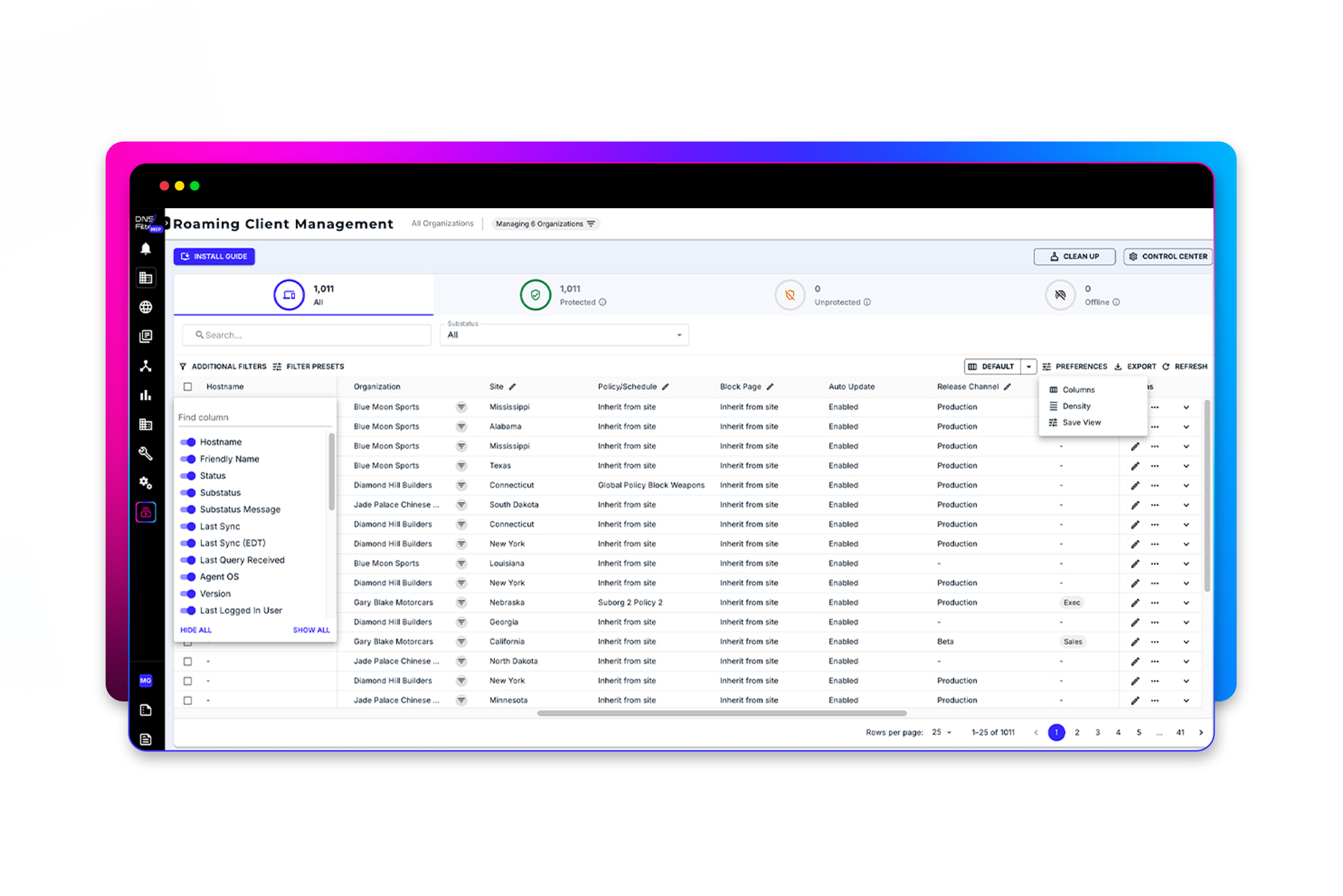
organizations protected worldwide
queries resolved per second
unwanted-content events filtered daily
threats blocked before competitors
Stop threats 10 days earlier
Our AI models classify newly registered and zero-day domains in real-time, so you block phishing and malware before threat feeds list them.
Deploy in minutes
Point your DNS forwarders or roll out a lightweight Roaming Client. Policies and reporting light up instantly, with no proxies, hardware, or hassles.
Protect users everywhere
Whether employees are at the headquarters, at home, or on public Wi-Fi, policy enforcement follows the the device. Windows, MacOS, iOS, Android, ChromeOS, and even IoT endpoints are covered.
Granular policy control
Choose from 36 categories, more than 400 SaaS apps, block risky top-level domains (TLDs), and time-based rules from one intuitive console, or automate everything through the API.
Content Filtering
DNSFilter’s content filtering engine evaluates domain requests in real-time, assigning each site to one of 36 policy groups. Instead of static lists or SSL-decrypting proxies, our AI inspects DNS metadata and hosting context to decide whether a site matches categories such as adult content, streaming video, or gambling.
Administrators choose what to allow or block, enforce SafeSearch and YouTube Restricted Mode, and add custom allow or deny lists. Filtering happens at the DNS layer, so pages are stopped before HTML or video streams load, reducing bandwidth and latency while keeping users compliant anywhere they connect.
Threat Blocking
Threat blocking combines multiple policy layers to shut down malicious traffic before any connection is made. Each DNS query is scored by our AI on factors like domain age and suspicious naming. Live feeds for phishing, malware, and botnets add a second checkpoint. Administrators can shrink the attack surface by blocking country-code or vanity top-level domains (TLDs) that aren’t relevant to the business.
Malicious Domain Protection is a policy setting that identifies zero-day domains an average of 10 days ahead of traditional feeds. Because every decision happens before the transmission control protocol (TCP) handshake or data is transmitted, endpoints stay isolated from threat infrastructure, and incidents never progress beyond the DNS request.
AppAware Application Blocking
Application blocking should be simple even; even when SaaS apps use sometimes hundreds of domains to operate. AppAware maps each application to every hostname it calls— APIs, CDNs, telemetry, and login portals—then bundles them under a single toggle. Block entire categories like “Remote Desktop Tools” or block “Discord” and DNSFilter denies every related request instantly. No unwieldy lists to chase, no firewall rule sprawl—just intelligent application filtering delivered with one click.
Malicious Domain Protection
Domain protection focuses on the DNS query itself. A machine-learning model, trained on millions of requests, scores each hostname for traits linked to phishing, malware, or Domain Generating Algorithms (DGAs). If the score crosses the threshold, DNSFilter blocks the connection in real time—often days before any threat feed flags the domain. Administrators enable Malicious Domain Protection with a single click in the ‘Threats’ area of policy settings to immediately enforce blocking.
Roaming Client—Remote Protection
The DNSFilter Roaming Client is a lightweight agent that enforces policy off-network. Deployed silently through RMM or MDM, it replaces the system resolver, encrypts queries, and applies the same rules users receive on site.
Because traffic flows directly to our Anycast cloud, there is no VPN back-haul latency. Device-level reports show where roaming users trigger blocks, giving administrators full visibility.
Insights and DNS Reporting
Real-time dashboards surface top threats, blocked categories, and query volumes, while drill-down views trace a single domain to every device that accessed it.
Exportable CSVs and scheduled PDFs satisfy auditors, and raw logs stream to Splunk, Elastic, or Amazon S3 for SIEM correlation. With up-to-the-minute DNS reporting, investigations shrink from hours to minutes.
Global Dual Anycast Network
Our dual Anycast DNS network spans more than 200 points of presence across 70 cities, routing each query to the nearest resolver for sub-30-millisecond median response worldwide. Independent backbones offer automatic fail-over; if a data center drops, BGP shifts traffic without customer action.
Integrations and Open API
DNSFilter fits neatly into existing toolchains with turnkey DNS integrations. Syslog streams and S3 exports feed Splunk, Elastic, and Crowdstrike. MSPs automate ticketing through ConnectWise, Autotask, Halo, Syncro, and Kaseya BMS. Developers script bulk changes with the open DNSFilter API, while webhooks trigger SOAR playbooks seconds after a threat block
Get the 2025 DNSFilter Annual Security Report
Insights from billions of DNS queries—threat patterns, AI findings, and regional trends.
Hybrid & Remote Workforce Security
In modern hybrid offices, laptops leave the corporate LAN daily. DNSFilter’s Roaming Client keeps threat and content policies active off-network and streams encrypted DNS data to the nearest Anycast server.
Administrators gain unified visibility over office and home traffic, without requiring VPN tunneling. Automated policy assignment by Active Directory group ensures contractors and employees receive the correct access levels wherever they log in.
Guest Wi-Fi & Retail Brand Protection
Cafés, hotels, and retail chains rely on public Wi-Fi to keep customers connected, but inappropriate or risky sites accessed over the network can damage the brand. DNSFilter installs at the gateway or upstream router, blocking adult content, hate speech, and malware before they appear on guest devices—no client software needed.
Location-based analytics show which stores see the most blocked threats, guiding local signage or bandwidth controls or upgrades. Provided as a cloud service means multi-site rollouts finish in a day, not weeks. Multi-tenancy makes central management a breeze.
IoT, OT & Unmanaged Device Security
Smart cameras, HVAC controllers, and factory sensors often cannot install antivirus or agents yet still reach the internet. DNSFilter’s agentless deployment protects these devices by resolving queries through policy-enforced resolvers.
Administrators block regions, TLDs, or entire content categories to eliminate unnecessary outbound traffic and spot compromised devices when they attempt to beacon out. Devices can be segmented and assigned a specific Relay to resolve DNS queries providing detailed query logs that integrate with SIEM tooling so SecOps can spot problem devices quickly, keeping production lines and building systems safe.
Education Safety & CIPA Compliance
Schools must balance open internet access for learning with strict content controls under the Children’s Internet Protection Act (CIPA). DNSFilter deploys directly on classroom networks and student Chromebooks, categorizing millions of domains in real time.
Administrators apply age-appropriate policies, enforce SafeSearch, and deliver audit-ready reports on demand. DNS-layer filtering conserves bandwidth for lessons, while the Roaming Client protects take-home devices without a VPN. Budget-friendly education licensing keeps total cost of ownership low so IT staff can safeguard students and faculty without complex hardware.
Phishing and Malware Protection
DNSFilter shields users from phishing pages and malware download sites by combining a constantly validated set of known-bad domains with real-time AI discovery.
Policies block recognized threats immediately and optional new-domain rules reject any hostname registered in the last 7 or 30 days—shutting down analysis that flags algorithm-generated names and convincing brand look-alikes, often identifying dangers 10 or more days before public feeds. Because the block occurs before any network session starts, malicious servers never receive a single packet.
Incident Response Acceleration
When an alert hits the SOC, analysts need the full story, not just a list of blocked sites. DNSFilter logs every DNS lookup—benign, suspicious, or malicious—so investigators can reconstruct a device’s entire internet timeline in seconds. Raw DNS query data can be exported to Splunk, QRadar, or any SIEM, where SOAR playbooks add context from EDR, firewall, and email gateways.
The complete picture means fewer pivots, faster root-cause analysis, and quicker containment, all without wading through millions of endpoint telemetry events.
Zero-Day Ransomware Defense
Ransomware gangs rely on command-and-control (C2) servers for stolen keys and data-leak channels. DNSFilter severs that link in three complementary ways.
First, every lookup is scored by our machine-learning engine, which flags algorithm-generated and brand-spoofing domains seconds after they appear—even when no threat feed has a record.
Second, policy controls can deny entire geographic domains frequently exploited by ransomware crews, cutting off large blocks of infrastructure with one setting.
Finally, the “New Domain” policy rules stop just-registered hostnames before they ever resolve. The combined effect blocks the C2 handshake, buys your team time to isolate affected systems, and prevents exfiltration or extortion demands.
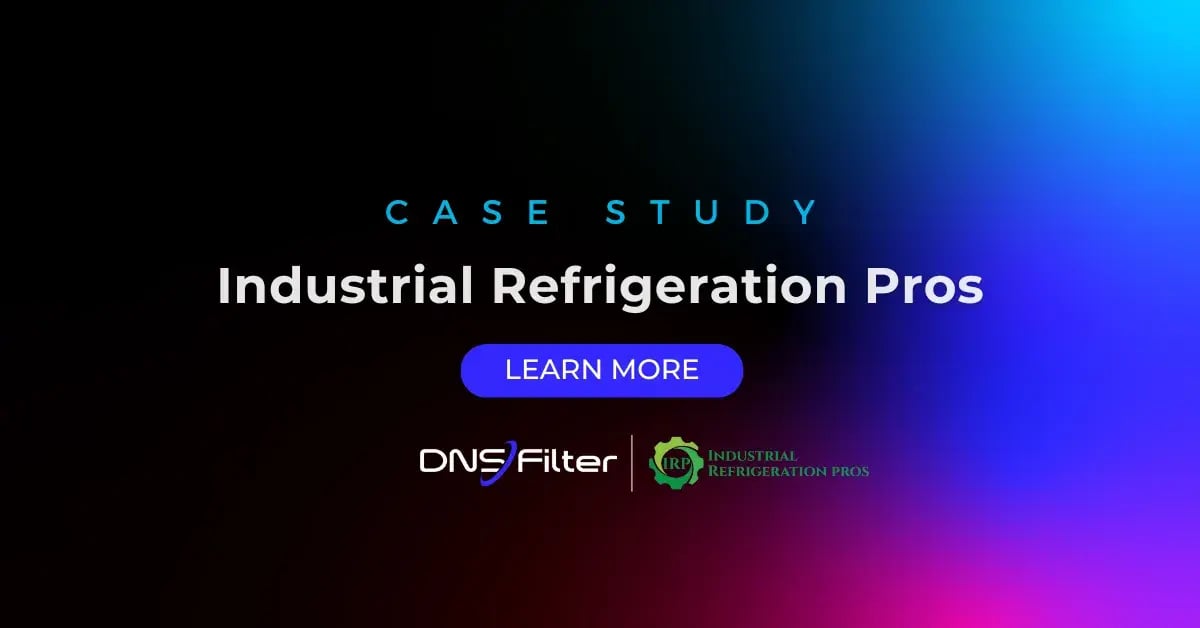
Industrial Refrigeration Pros: Phish Blocked Dead
An email from a compromised client bypassed email defenses; EDR flagged the endpoint only after the click. DNSFilter stepped in as the last line of defense. Read the full story →
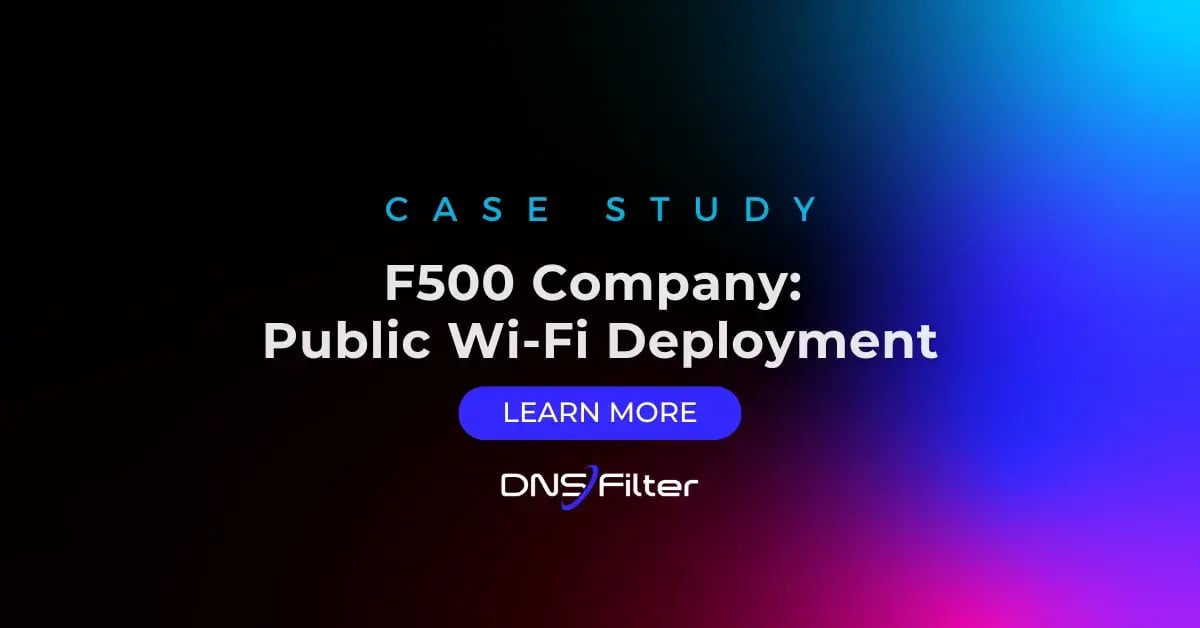
Fortune 500 Switches from Cisco Umbrella
Head-to-head testing showed DNSFilter caught 97% of threats Cisco Umbrella missed, driving the switch. Read the full story →
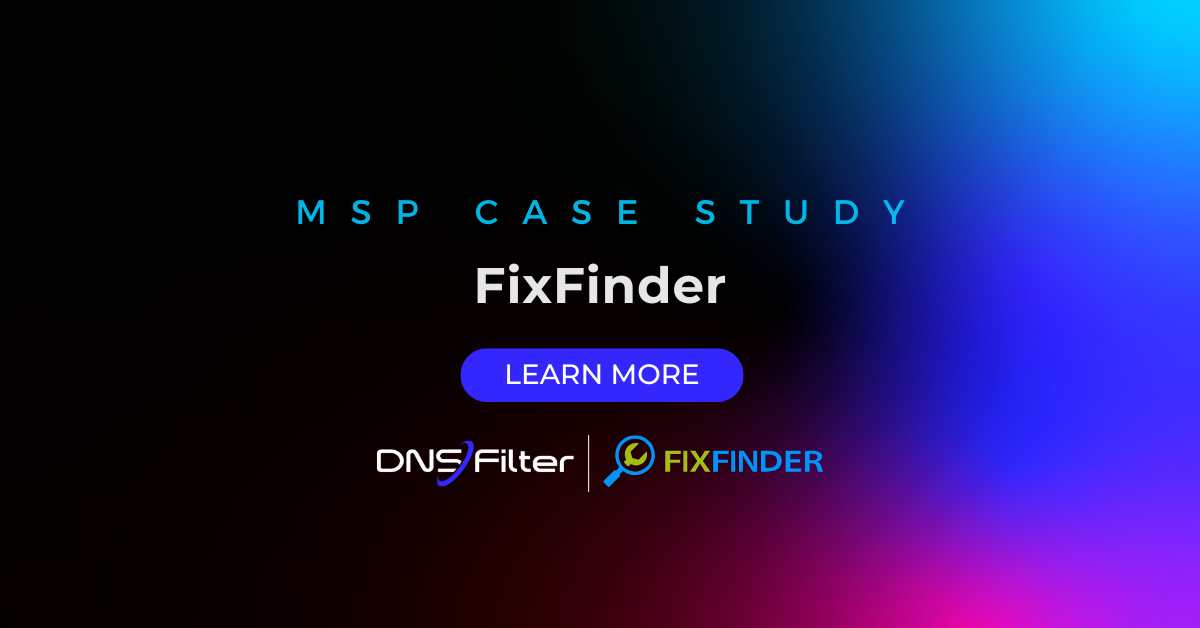
FixFinder Stops a Fileless Malware Attack
Real-time DNS logs traced the blocked Lumma Stealer fileless malware attack in under 30 minutes. Read the full story →
Visible Client Value & Compliance Reporting
Quarterly reviews are easier when results are clear. DNSFilter’s reporting center turns raw DNS data into executive summaries that show threats blocked, easily showing policy compliance with standards like HIPAA, CIPA, and CIS.
Schedule PDF reports for stakeholders, export CSVs for auditors, or stream logs to Splunk and Sentinel for deeper analysis. Because every lookup, permitted or blocked, is recorded, support teams can answer “What did this device access?” without waiting on endpoint telemetry, strengthening renewal conversations and upsell opportunities.
Unified White-Label Multi-Tenant Management
A single console governs every customer. Baseline policies—such as SafeSearch enforcement or unified block or allow lists—can be applied to new tenants in seconds, then adjusted per organization without touching global settings.
Role-based permissions safeguard administrative controls, while customizable branding places your logo and support details on dashboards, reports, and block pages. Agents deploy through RMM scripts, Relay virtual machines, or simple DNS forwarding, giving complete coverage without additional hardware.
Partner-Focused Growth Support
DNSFilter backs partners with margin-friendly pricing tiers, ramp-up discounts, and co-branded collateral. A dedicated partner manager provides migration assistance, deployment scripts, and live product training to accelerate customer onboarding.
Feedback sessions with the MSP Advisory Council shape roadmap priorities. Support from DNS specialists ensures issues are resolved quickly, turning DNSFilter into a reliable, high-value layer that enhances every managed security stack.
Automated Billing & Workflow Integration
DNSFilter aligns with core systems MSPs already use. Native connectors for ConnectWise Manage, Autotask, HaloPSA, Syncro, Kaseya BMS, and Pulseway sync seat counts and agreements automatically, so invoices go out correctly the first time.
The open API and Rewst templates let you script onboarding, off-boarding, and allow-list changes in a single step, reducing manual tickets by up to 80 percent. With fewer spreadsheets and no third-party fees, finance stays accurate and engineers focus on higher-value work.
Ready to protect every click?
DNSFilter makes content filtering and threat blocking easy. See it in action.
You're only minutes away from protecting employees from unwanted content on the company network. Try it right now, commitment-free.
Frequently Asked Questions
What is “AI-powered content & threat filtering” at the DNS layer?
DNSFilter’s real-time AI models classify every domain request for risk or policy violations before the connection completes, blocking phishing, malware, and inappropriate content in a single step — no proxy or SSL decryption required.
How fast can I deploy DNSFilter?
Most teams go from zero to protected in minutes: just point your DNS or roll out the lightweight roaming client—no hardware, no heavy configuration. It plugs into your existing stack and scales automatically.
How does DNSFilter complement firewalls, SWGs, or endpoint tools?
Because it operates before the TCP handshake, DNSFilter acts as both the first and last line of defense—blocking risky domains that slip past email filters or endpoint agents, and doing so an average of 10 days earlier than feed-driven tools. Use it alongside existing controls to cut incidents without adding management overhead.
Does DNSFilter meet Protective DNS guidance and industry regulations?
Yes. DNSFilter aligns with CISA’s Protective DNS recommendations and offers pre-built categories that help organizations satisfy CIPA, CMMC, HIPAA and similar mandates.






.png?width=154&height=50&name=fresno%20(1).png)











